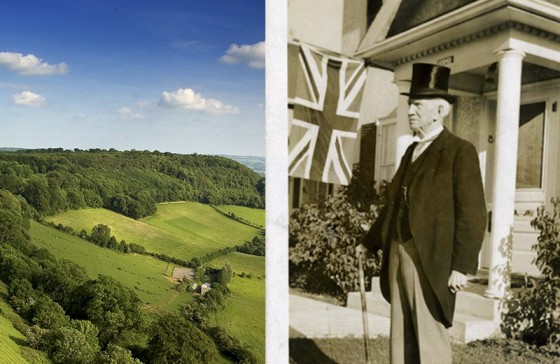 Elizabeth Hayden headed for the rolling hills of the Cotswold in England to find the ancestral home of her great-grandfather, Thomas Thatcher Grimmett. (Left photo by Joe Dunckley via Flickr)
Elizabeth Hayden headed for the rolling hills of the Cotswold in England to find the ancestral home of her great-grandfather, Thomas Thatcher Grimmett. (Left photo by Joe Dunckley via Flickr)
DNA technology is great. But if you really want to connect with your ancestors, do your genealogical research the old fashioned way.
Under my feet I felt the worn stones of the kitchen floor where my great-great grandmother once walked. I closed my eyes and tried to hear her footfalls.
The stone house stood on a gentle hill, one of the many that roll across the Cotswolds in the English countryside. Sheep fields lined the narrow road that brought us to this place where my family lived five generations ago.
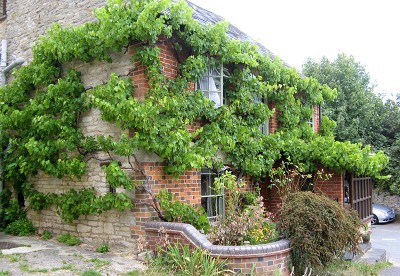
I wanted to wrap myself in the air and try to find my history in the molecules that floated around me.
At the mid-point of my life I had stepped foot off the American continent with my mother, sister and daughter in search of my family’s past and a sense of who I am.
I looked at the green rolling countryside and wondered what prompted a man with at least five adolescent children to pull up roots here and head to the flat plains of Saskatchewan. I wondered if my restlessness was inherited from a man who would leave the insular world of the Cotswolds to become an itinerant preacher in the Northwest Territories.
Graham and Cory Piggott, sculptors and the current caretakers of the home, showed us around. We climbed narrow stairs to the basement to see the stone oven that my great-great-grandmother, Elizabeth, used as a baker.
She was “the bread-winner” of the family, according to our old family stories. The space that once held baking flour to keep my ancestors fed now held the clay that Graham Piggott uses to create the sculptures he sells to support his family.
We returned to the dining room and Graham placed a piece of paper on the kitchen table. “We found this tucked away,” he said.
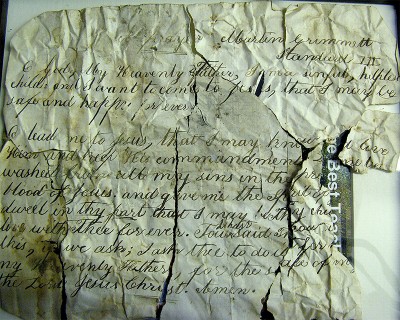
I looked at the paper, a bible verse and my great uncle’s name was scrawled across it. More than 130 years after my great-great-grandfather left I was looking at a scrap of paper left behind by one of his children.
For years, I collected relatives in a genealogical database, most of them only names that rolled through history. Birth and death dates, and the DNA living in our bodies, were all that was left to prove they existed. I had lists of names, but no stories.
My grandfather, the descendent of John and Elizabeth, was only a face in a black and white picture succumbing to pneumonia several years before I was born. Now middle-aged, I was beginning to realize how many questions I had never asked and I wanted to find as much information as I could from my aging father.
I could interview my parents to find out more. Or even better, I thought, using newly available commercial technology, I could test their DNA.
Dad pulled the swab from inside the small tube and a short bristly comb emerged.
“OK,” I said. “Go for it, Dad.”
He scrubbed in the inside of his cheek collecting skin cells and saliva to be sent to the lab at Family Tree Finder.
Y-DNA, mitochondrial DNA and telomeres clung to the side of the test tube as they flew across the country to extracted and analyzed. We waited as the threads of our ancestry were spun out into strands of G-A-C-T that stretch back generation after generation.
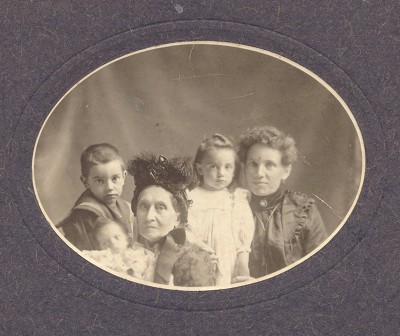
We learned that my father’s Y-DNA points to Ireland, not a surprise since my fourth great-grandfather Hugh Carroll arrived on the shores of North America while we were still a colony.
Family lore said Dad’s mother had a Native American ancestor. But mitochondrial DNA showed my grandmother’s origins in the Caucasus — 40% of mitochondrial lineages in Europe come from that haplogroup.
Dad was disappointed. It didn’t discount the stories of Native American ancestry, but it couldn’t prove it either.
Lucky for us, Family Tree DNA stores three vials of DNA material. We still had two left after Dad’s death, and I longed to know more about his history.
The science behind Autosomal DNA has advanced since his death, so we decided to test again. It can all seem really complicated looking at the test results.
Here’s how it works: Autosomal DNA recombines each time a child is born and pieces of DNA history fall away. So even if an ancestor is from a certain region, after a number of generations that information may be lost. Autosomal DNA will give information going back about five generations.
After waiting months for the results I opened the email telling me the results are ready.
I was stunned. Some branches of my father’s family have been on this continent since before the Revolutionary War, but his DNA is over 93% Western European.
Six percent was Middle Eastern — probably DNA from deep ancestral history.
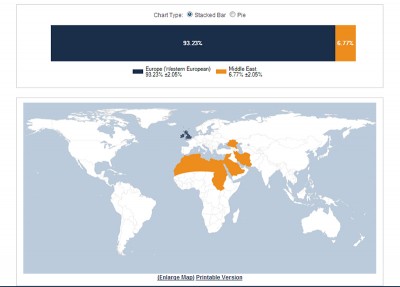
Somehow I expected there might be something more interesting or surprising, but my dad’s DNA seems to reflect how tightly knit many of the European immigrant groups in America remained until very recently. The Native American ancestor story looks less and less likely, and I am glad we waited until Dad died to do the test.
If you’re considering DNA testing for your family, here are some lessons learned:
- Before getting DNA testing, explore all other genealogical avenues. The best data is often from old records, censuses and family stories. Then DNA analysis can confirm what you know or maybe fill in holes, but alone it does not help connect you to ancestors.
- Shop around online to find the best price and value for DNA testing. Family Tree DNA, National Geographic’s Genographic Project, 23AndMe (medical history testing) and Ancestry.com all provide different types of DNA tracing services.
- Connect with others who are using DNA to glean more information. To make even more sense of what I have learned from testing, I now need to put all the genealogy information I have about our family onto the Carroll Surname Project on a family tree website to find others who have genetic matches. Then we can compare our family histories and use each other’s information to fill in blanks that we have in our own research.
DNA testing can tell me a bit about where I come from, but it will never hold the stories that my great-grandfather wrote about his family. The numbers on paper will never replace the feeling beneath my feet as I walked across the stones in my great-great-grandmother’s kitchen knowing her feet had tread there over a hundred years ago.


hi I was wondering if I have my own DNA test could I use it to find my mother’s family